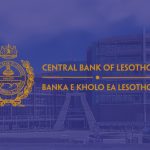
Monetary Policy Committee (MPC) Statement of the 23 July, 2019
July 23, 2019
Stakeholder Sensitization Seminar 2019
October 28, 2019The Monetary Policy Committee (MPC) of the Central Bank of Lesotho (CBL) held its 79th meeting on the 24th September 2019. During this meeting, the Committee considered international, regional and domestic economic developments and financial markets’ conditions, to determine monetary policy action that is appropriate for executing the CBL’s primary mandate of maintaining price stability.
The global economic activity was relatively weaker in the second quarter of 2019 amid heightened downside risks and indications of weakening global trade. During the second quarter, output growth in the advanced economies softened, mainly driven by a slowdown in US economic activity. However, the unemployment rate declined moderately in most advanced economies during the review period. Downside risks to the global economic outlook arise from the continuing trade and geo-political tensions and other country-specific factors.
While global inflation rates remained low, inflationary pressures were mixed in advanced economies between June and August 2019. The US registered a slight increase in the rate of inflation while the Euro Area, Japan and the UK registered decelerations. The monetary policy stance remained accommodative across the advanced economies, with the US cutting its key policy rate while other countries kept their policy rates unchanged.
Among the emerging market economies, economic activity remained relatively subdued, despite a marginal increase of 0.9 per cent in South Africa’s GDP growth, while growth rates in China and India declined modestly, in the second quarter of 2019. In South Africa, low business confidence undermines growth prospects in the medium term while risks to long-term growth emanate largely from structural challenges. The annual rate of headline inflation, measured by changes in the consumer price index (CPI) for all urban areas, was recorded at 4.3 per cent in August 2019.
Based on the CBL measure of economic activity, domestic output increased marginally by 0.1 per cent in July 2019 compared with a contraction of 0.5 per cent in June 2019. This was mainly a reflection of a pickup in aggregate demand. In contrast, in the labour market, employment by the LNDC-assisted firms declined further in the second quarter on account of lack of orders for some of the bigger firms.
The inflation rate, measured by year-on-year percentage change in consumer price index (CPI), declined from 5.4 per cent in July 2019 to 5.2 per cent in August 2019. The major contributors to this position were Food and non-alcoholic beverages, Housing, electricity, gas and other fuels.
Money supply, as measured by M2, increased by 4.9 per cent in July 2019 following a decline of 1.7 per cent in June. This was as a result of an increase in net foreign assets that outweighed the decline in domestic claims. Private sector credit continued on an upward trend, increasing by 2.0 per cent in July 2019.
The external sector position improved in the second quarter, boosted by a narrowing in the current account deficit and a marked increase in the capital and financial accounts. Consequently, gross international reserves rose to 4.6 months of import cover from 4.5 months in the second quarter.
Government operations culminated in a fiscal surplus of 5.3 per cent of GDP in July 2019, largely as a result of quarterly receipt of SACU revenue. Operations are expected to normalise in the subsequent months with spending expected to pick up as budget implementation gathers momentum.
In summary, the global economic activity was weaker during the second quarter, amidst heightened risks. Domestically, economic growth remained weak, while consumer price inflation decelerated in August 2019. Risks to the domestic economic outlook include exposure to global economic developments, weak domestic economic activity, structural rigidities and policy uncertainty.
Having considered the above developments, the MPC decided to:
- Reduce the NIR target floor from US$750 million to US$720 million.
- Maintain the CBL rate at 6.50 percent per annum.
The Committee will continue to monitor the global developments and their likely impact on domestic macroeconomic conditions, especially the CBL net international reserves (NIR), with the aim of taking corrective action when needed.
A.R. Matlanyane (PhD)
GOVERNOR
Contact Person:
Ephraim Moremoholo +266 22232094
emoremoholo@centralbank.org.ls

